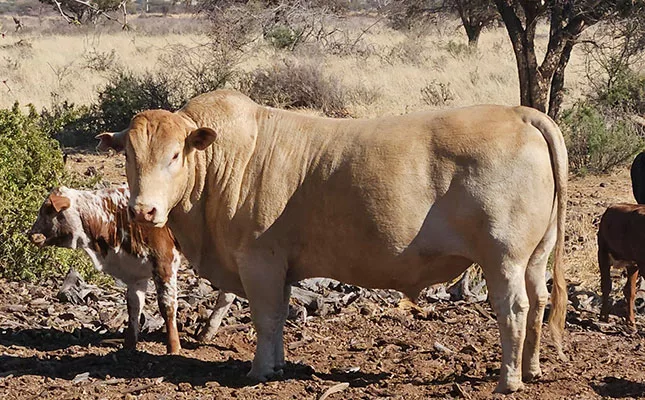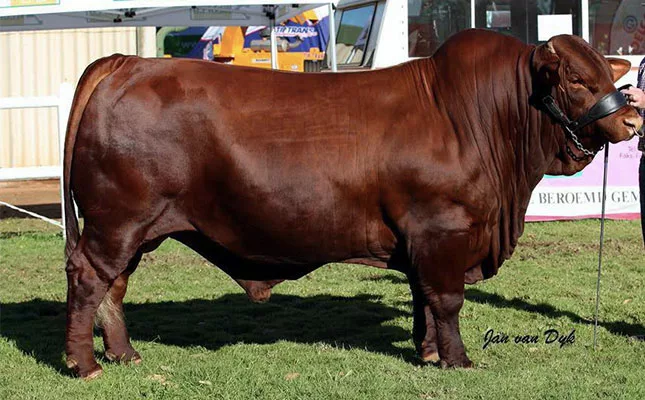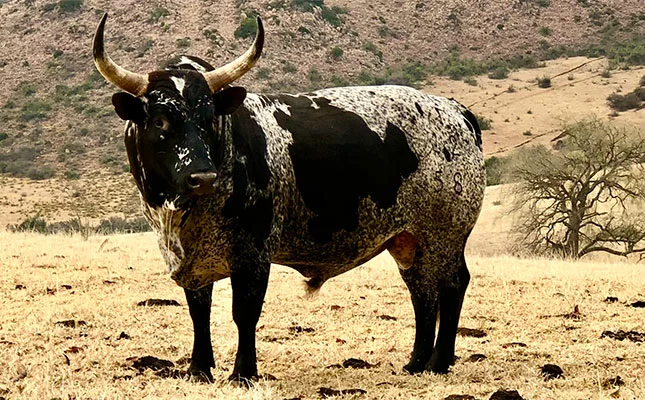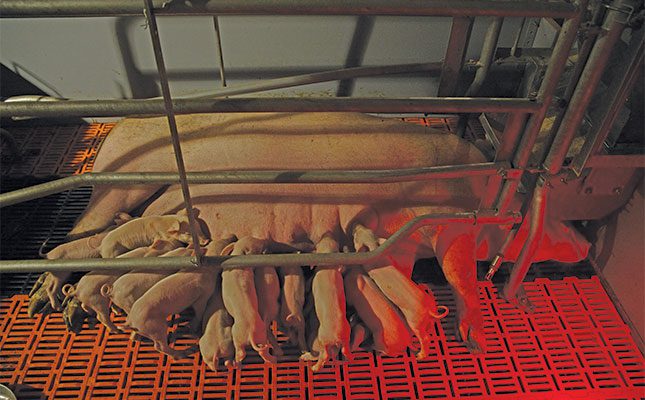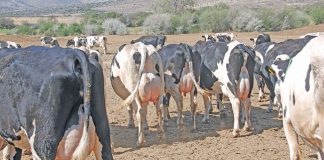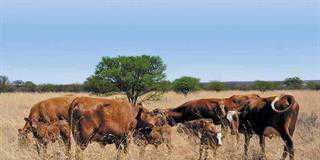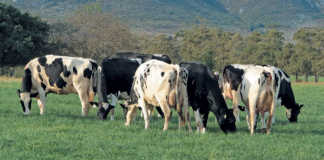
Photo: Supplied
Tell us more about the history of the breed.
The Afrikaner breed has been under development for thousands of years, tracing its roots back to the lateral-horned Zebu found among wild cattle on the Asian Steppes.
The breed was believed to have started moving into Africa around 2 000 years ago, gradually migrating southwards.
By the 15th century, Portuguese sailors had started noting the presence of cattle in the south-western regions of South Africa.
Subsequent research has indicated that the Afrikaner breed arrived in the Western Cape with the Khoi tribes that had moved to the region in the 14th century. Dutch settlers acquired their first Afrikaner cattle from Khoi peoples in 1652 and these cattle were used for meat and milk.
They were also widely used for transporting goods across the country in the time before railways were established and were used to pull ox wagons during the Great Trek into the interior.
At the start of the 19th century, the Afrikaner was a well-defined breed with unique characteristics. It became the first indigenous cattle breed of South Africa for which a breeder’s society was formed, thanks to the advocacy of Alex Holm, director of the Potchefstroom College of Agriculture.
A studbook was established in 1912 and the Afrikaner was registered as an official cattle breed, enabling controlled breeding to shape the modern Afrikaner.
How has the breed evolved over the years?
The modern Afrikaner has developed from a draught animal into a beef breed that can stand its own ground in the South African market.
It is a medium-framed beef breed that exhibits a sleek coat, notably long and deep body, and possesses a docile temperament. It has evolved through a blend of natural and scientifically guided selection, resulting in a robust, adaptable animal with an inherent resistance to ticks and tick-borne diseases.
Selection in recent history has been in adherence with scientific standards focused on key economic traits, such as: adaptability; fertility; high milk production; low mortality rates in cows; growth; feed conversion; daily gain; and carcass quality in bulls.
Despite the scientific approach, visual appraisal has consistently held the highest priority in the selection process. This emphasis has proven instrumental in fostering uniformity and adhering to the Afrikaner Standard of Excellence, shaping the breed’s distinctive appearance and characteristics.
Although known for its impressive horns, commercial Afrikaner producers will mostly dehorn animals for ease of management and to prevent unnecessary injuries.
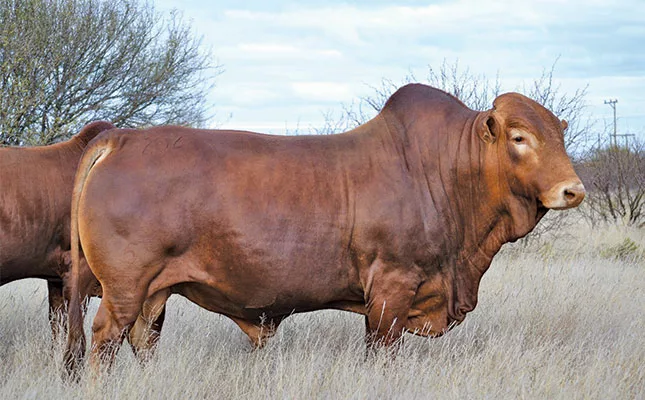
How would you describe an Afrikaner in terms of the breed standard?
We have two key areas on which we focus.
Firstly, the standard is based on phenotypically observable characteristics such as colour, type and conformation:
- There is gender authenticity, with bulls appearing masculine and powerful and cows genuinely feminine in appearance.
- Conformation – Afrikaner cattle have ‘breed genuine’ deep oval necks and chests, middle piece and buttocks giving the overall impression of a deep, oval-shaped animal.
- Colour – Studbook animals include red coats (all shades from light red to dark red), while white is permitted on and above the underline. Cattle can be red spotted and speckled, with these marks accepted in all shades of yellow and white. Skin colour is amber and well pigmented.
The above are just some examples from the detailed breed standard description.
The second key criterion which informs producers about the breed standard is that cattle must be genetically above average in growth and milk production.
What are the benefits of Afrikaner cattle compared to other breeds?
The Afrikaner is a Sanga breed, which is well adapted to harsh South African conditions, and therefore offers several advantages over other breeds. This is primarily due to their genetic composition, exceptional adaptability, hardiness and natural resistance to ticks.
They are well suited to various climates and grazing conditions, making them a popular choice for farmers across South Africa. They are known for their ability to withstand harsh conditions, including temperature extremes and poor-quality grazing.
Some of the Afrikaner’s strong points are their walking ability and longevity. Their loose, thick hide and coat colour offer protection against ultraviolet radiation and the heat of the sun, as well as aiding with the natural resistance against ticks.
Afrikaner cows are excellent mothers, who provide ample milk for their calves. They have a good temperament that makes them relatively easy to handle.
The Afrikaner is one of the breeds with the best meat quality, with the meat known to be tender and succulent.
In a crossbreeding programme, the Afrikaner improves mothering ability, adaptability, calving ease, hardiness, walking ability, longevity, and resistance to diseases and ticks. They also improve the crossbred offspring’a ability to thrive on natural pastures, producing high-quality meat for the market.
What are the main goals of the society when it comes to the preservation of the Afrikaner?
The main goal of the society is to breed cattle that will enable the commercial farmer to produce beef economically, and sustainably.
Afrikaner cattle come from a mother line that has inherent traits like hardiness and adaptability. Fertility is non-negotiable, along with ease of calving and milk production.
We are striving to further improve these traits and, in so doing, increase the effectiveness of our cows even further. In order to remain competitive with other breeds, we are focusing on growth both on the veld and in feedlots.
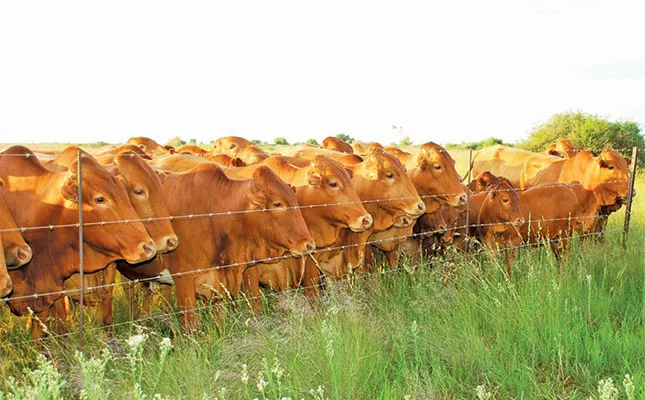
Breeders are encouraged to record weights and do measurements so as to bring improvement to their herds.
We aim to improve the strong points of the Afrikaner cattle breed, including aspects like longevity, walking ability, resistance to parasites, and meat quality.
Are there any key focus areas for improvement of the breed in the future?
The technical committee is looking into improving fertility and cow effectiveness even further.
Emphasis is also being placed on post-weaning growth rate so that the Afrikaner can be more competitive against other breeds. This must not happen at the cost of traits like hardiness, though.
Are there any initiatives or achievements you would like to highlight?
From this year we have started branding bulls with an ‘A’ on the right shoulder.
All Afrikaner bulls bearing this mark will be certified as performance-tested bulls. From now on, an Afrikaner bull will be recognisable by the ‘A’ brand marked on its shoulder.
We are also proud of the fact that two of our breeders are now receiving a premium from the feedlots they supply due to the good feed conversion and meat growth on their weaners. These two breeders are Jannie Visagie and Pierre-André Cronjé.
The Afrikaner is now definitely standing its own ground in feedlots too and that is what we are striving for. We are aiming to breed heavy weaners that are acceptable to the feedlots.
For more information visit afrikanerbees.com, or phone 051 410 0954. Email [email protected].



